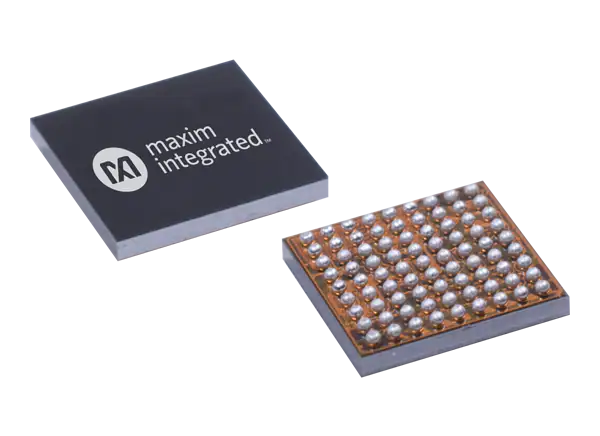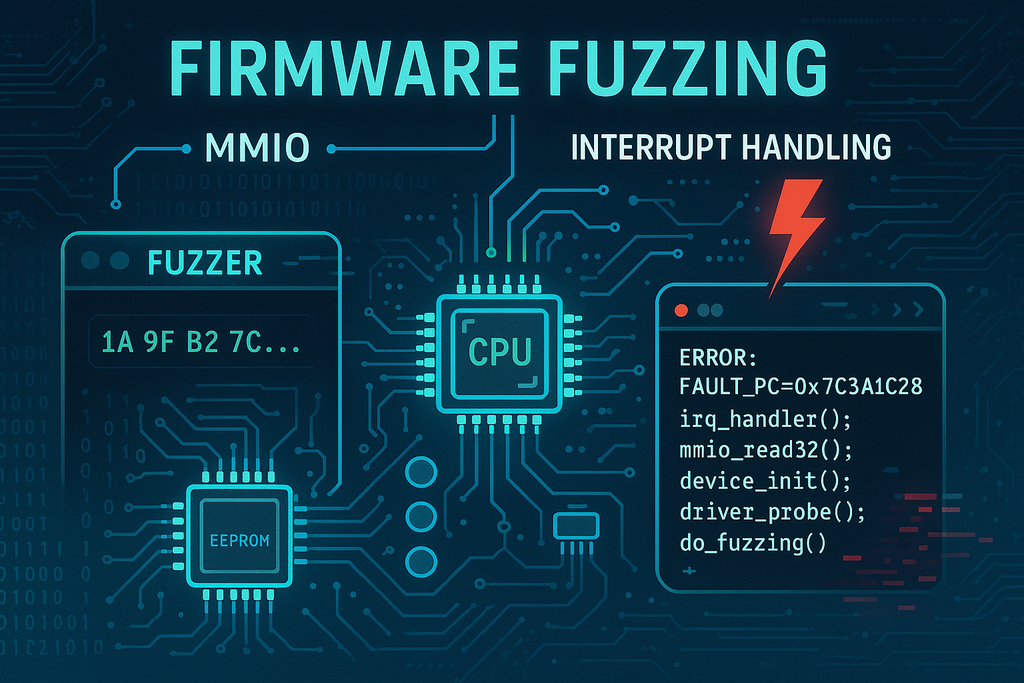
The MAX32655 is a low-power, high-performance microcontroller based on the Arm Cortex‑M4 processor with a floating-point unit (FPU) and Bluetooth 5.2 connectivity. Designed for demanding applications, this microcontroller is widely deployed in industries such as:
- Industrial IoT: For sensor hubs, data acquisition devices, and process control systems.
- Medical Devices: Where reliability and low power consumption are paramount.
- Wearable Technology: Including health monitors and fitness trackers.
- Automotive Applications: For in-vehicle telematics and diagnostics.
Given its role in critical systems, any vulnerability within its firmware can pose a significant risk—ranging from operational disruptions to safety hazards.
The Vulnerability: Denial-of-Service via UART Payload
Our research focused on the terminal command parser implemented in the Cordio library (part of the MAX32655 MSDK). This component handles input received over the UART interface, parsing commands that control device behavior. Metalware discovered that a carefully crafted input consisting solely of quotes and whitespace characters can trigger a null pointer dereference, effectively causing a denial-of-service (DoS) condition.
How Does It Happen?
The vulnerability lies within the
terminalExecute() function in the firmware’s terminal.c file. This function is responsible for parsing the input command into arguments and then dispatching the corresponding command handler. Here’s a simplified look at the problematic code section:cstatic void terminalExecute(char *pBuf) { uint32_t argc = 0; char *argv[TERMINAL_MAX_ARGC + 1]; uint32_t length; char *pBufCur; int state; enum { STATE_OUTSIDE_OF_ARG, STATE_JUST_GOT_QUOTE, STATE_INSIDE_OF_ARG, STATE_INSIDE_OF_ARG_IN_QUOTES }; /* Parse arguments in command */ state = STATE_OUTSIDE_OF_ARG; length = strlen(pBuf); for (pBufCur = pBuf; pBufCur < pBuf + length; pBufCur++) { switch (state) { case STATE_OUTSIDE_OF_ARG: if (*pBufCur == '\"') { state = STATE_JUST_GOT_QUOTE; } else if (!TERMINAL_IS_SPACE(*pBufCur)) { state = STATE_INSIDE_OF_ARG; if (argc < TERMINAL_MAX_ARGC) { argv[argc] = pBufCur; } argc++; } break; case STATE_JUST_GOT_QUOTE: if (argc < TERMINAL_MAX_ARGC) { /* BUG: Incorrect index used here. It should be argv[argc] */ argv[state] = pBufCur; } argc++; if (*pBufCur == '\"') { state = STATE_OUTSIDE_OF_ARG; *pBufCur = '\0'; } else { state = STATE_INSIDE_OF_ARG_IN_QUOTES; } break; // ... additional state handling omitted for brevity ... } } /* Command dispatch logic follows */ if (argc > 0) { terminalCommand_t *pCommand = terminalCb.pFirstCommand; while (pCommand != NULL) { if (strcmp(pCommand->pName, argv[0]) == 0) { break; } pCommand = pCommand->pNext; } // Further command execution logic... } }
What’s Wrong?
The flaw is subtle but impactful:
- In the
STATE_JUST_GOT_QUOTEcase, instead of storing the pointer atargv[argc], the code erroneously writes toargv[state].
- Since
stateis defined via an enumeration (and is not guaranteed to match the current argument count), this mis-indexing can leaveargv[0]uninitialized.
- Later, when the command dispatcher calls
strcmp(pCommand->pName, argv[0]), it may dereference aNULLor garbage pointer, leading to a crash.
An attacker who sends a UART payload composed only of quotes and whitespace can exploit this behavior to crash the device, resulting in a denial-of-service (DoS) attack. In mission-critical systems—like industrial control or medical devices—such disruptions can be catastrophic.
Potential Impact on Industry Applications
The MAX32655 is often deployed in environments where reliability is critical:
- Industrial Automation: A DoS attack could halt production lines or disrupt sensor networks, leading to significant downtime and financial losses.
- Medical Devices: Interruption of device functionality could compromise patient monitoring or treatment delivery, posing serious health risks.
- Automotive Systems: In-vehicle devices experiencing a crash could affect diagnostics or safety systems, undermining vehicle reliability.
In each of these scenarios, a vulnerability in the firmware’s command parser not only threatens operational continuity but also endangers safety and trust in the technology.
How Metalware Firmware Fuzzer Uncovered the Bug
Our Metalware firmware fuzzer is engineered to rigorously test firmware by injecting a wide array of input sequences, including edge-case data that developers might not anticipate. During routine fuzzing of the MAX32655’s UART interface, Metalware identified abnormal behavior when processing input containing only quotes and spaces.
By continuously mutating the input and monitoring the system’s response, Metalware was able to trigger the null pointer dereference in the
terminalExecute() function. The automated discovery of such a nuanced bug reinforces Metalware’s capability to uncover critical vulnerabilities in embedded firmware—before they can be exploited in the field.Disclosure Timeline
October 17, 2024 - Metalware emails Analog Devices Security Technology group
Dec 5, 2025 - Metalware requests an update, receives no response
Feb 11, 2025 - Metalware requests an update, receives no response
Feb 17, 2025 - Advisory published




